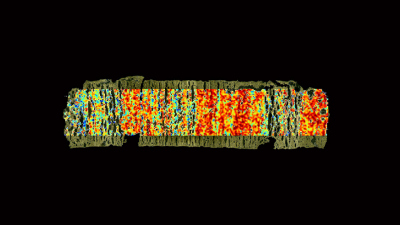- Home
- Discover
- Media Releases
- Media Releases 2022
- Reconstruction SST
First Temperature Record from the Last Interglacial in annual resolution

For a new study, published in Nature Geoscience, researchers examined a sediment core from the eastern Mediterranean Sea that recorded temperature from the last interglacial. "This time interval is relevant to humans and society because it was warmer than now - and that without human influences like CO2," explains first author Dr. Igor Obreht from MARUM. Temperatures were higher because the astronomical parameters were different, he says. However, so far, our understanding of climate variability from this period was based on paleoclimate proxy records whose resolution does not allow direct comparison with the current and projected climate trends in the 21st century.
The novelty of this study is that the authors generated sea surface temperature records in resolution from 1 to 4 years that can be directly compared with instrumental temperature records and future model projections. This way, Obreht says, it is possible to put the current anthropogenic changes in climate into a geological context. "We can thus evaluate and classify current processes and draw conclusions for the future."
The Mediterranean Sea is today, as it has been in the past, one of the most sensitive regions to climate change. For this study, the researchers used a recently developed method of mass spectrometry imaging on sediments, which enabled them to obtain the high-resolution biomarker data from the sediment surface and translate it into annual temperature curves and create a temperature reconstruction over a time course of 4,800 years. They observed that the sea surface variability from the previous warmer-than-present world was in the range of the variability from the instrumentally measured seas surface temperatures over the last 160 years.
However, the projected twenty-first-century increase in Mediterranean sea surface temperature will likely be higher than the natural climate variability from the Last Interglacial. In particular, the high-emissions scenarios suggest the Mediterranean future sea surface temperature increase to outpace any analogous increase from the Last Interglacial within the next few decades. On the other hand, the projected Mediterranean sea surface increase with the medium-to-low emissions scenario is much closer to the natural climate variability from the Last Interglacial. Thus, this study suggests that limiting future greenhouse gas emissions to the medium-low scenario and below could perhaps keep the twenty-first-century Mediterranean temperature variability in the scale comparable to natural variability from the Last Interglacial and thus reduce the risk of major perturbations of Mediterranean marine ecosystems.
Igor Obreht, David De Vleeschouwer, Lars Wörmer, Michal Kucera, Devika Varma, Matthias Prange, Thomas Laepple, Jenny Wendt, Sri D. Nandini-Weiss, Hartmut Schulz, Kai-Uwe Hinrichs: Last Interglacial decadal sea surface temperature variability in the eastern Mediterranean. Nature Geosciences 2022. DOI: https://doi.org/10.1038/s41561-022-01016-y
Contact:
Dr. Igor Obreht
Organic Geochemistry
MARUM – Center for Marine Environmental Sciences
University of Bremen
Phone: + 49 421 218 65730
E-mail: [Bitte aktivieren Sie Javascript]
Participating institutes:
MARUM – Center for Marine Environmental Sciences and Department of Geosciences, University of Bremen, Germany
Institute of Geology and Paleontology, University of Münster, Germany
Alfred Wegener Institute Helmholtz Centre for Polar and Marine Research, Potsdam, Germany
Department of Geoscience, Eberhard-Karls University, Tübingen, Germany


